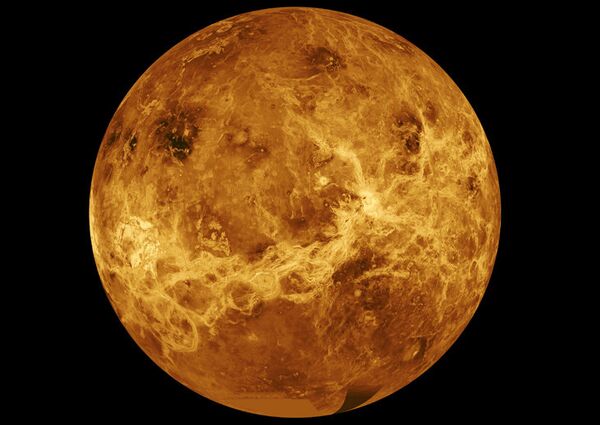These dark areas have been observed since 1929, and in 2008 scientists published a study which found them to be comprised of solid particles or liquid droplets that get transported from deep in the atmosphere up to the planet's cloud tops.
However, the composition of the particles making up the dark areas has remained a mystery to astronomers, and recent research from Russian astronomer Vladimir Krasnopolsky has shown that one of the most popular theories is wide of the mark.
"Somewhere in the highest level of the clouds there is a substance that is absorbing ultraviolet rays. Over the past 30 years many different theories have been put forward as to what it could be," Krasnopolsky explained in a press release from the Moscow Institute of Physics and Technology.
"Many scientists thought that sulfur particles are responsible, but now we have to discount this hypothesis," he said.
Krasnopolsky first cast doubt on that thesis in 1986, when he demonstrated that there are not enough sulfur aerosols (sulfur-rich particles) in Venus' atmosphere to explain the existence of the dark bands.
In his latest research, published in the journal Icarus, the scientist presents a photochemical model for the formation of sulfur particles in the clouds of Venus.
Krasnopolsky found that sulfur aerosols are mainly found in the lower level of the atmosphere, invisible from space, where they only constitute ten percent of the lower cloud layer.
"Sulfur aerosol cannot be the near UV absorber because its abundance is too low at the cloud tops and disagrees with the profile of the absorber observed by Venera 14," he wrote in the paper.
Rather than sulfur, the main absorber of the near-ultraviolet light may be ferric chloride, which was detected in the atmosphere of Venus by the Venera 12 probe.
In 1981 scientists from the Space Research Institute of the USSR Academy of Sciences estimated the properties of a mixture of sulfuric acid and ferric chloride, and Krasnopolsky believes this may hold the key to the mystery, RIA Novosti reported.
"This allows us to consider a mixture of sulfuric acid and ferric chloride as the main contender for the role of a mysterious ultraviolet absorber," he said.




